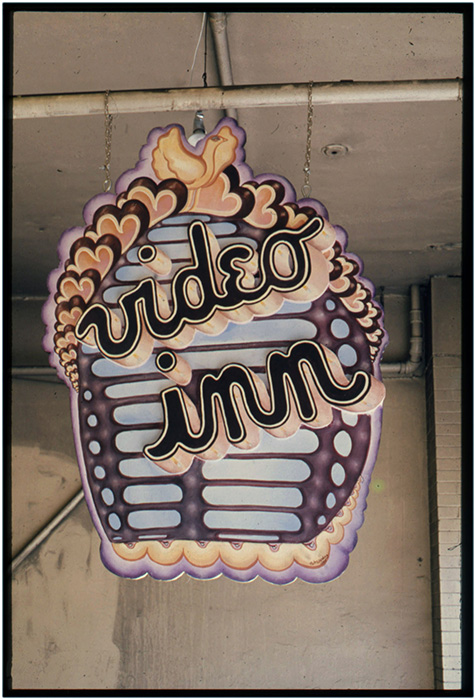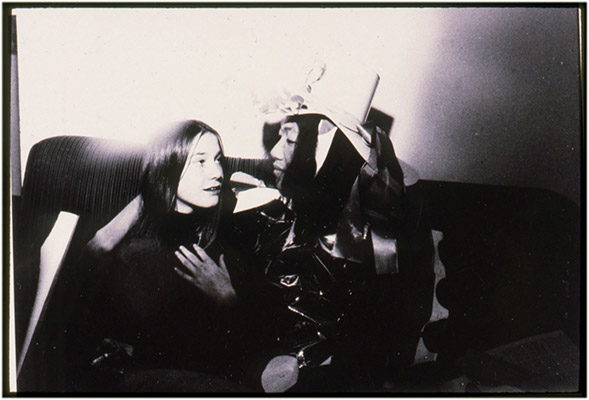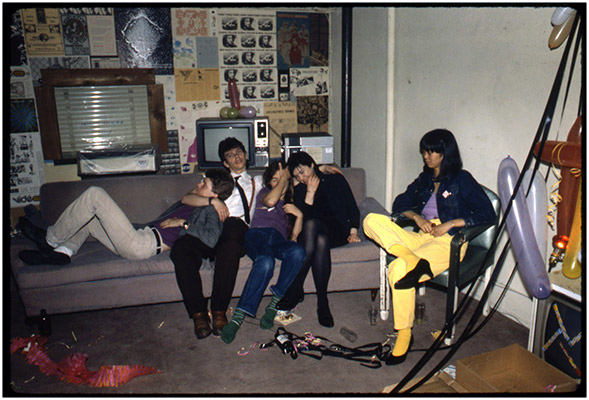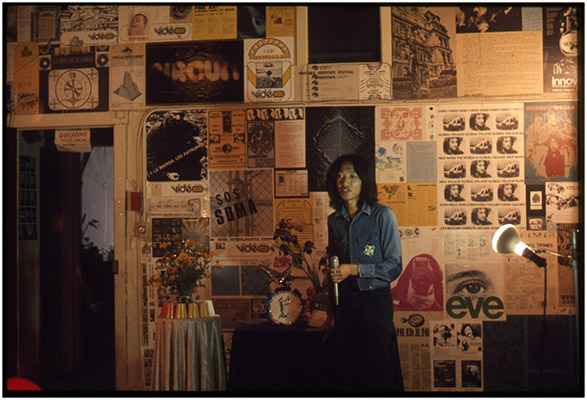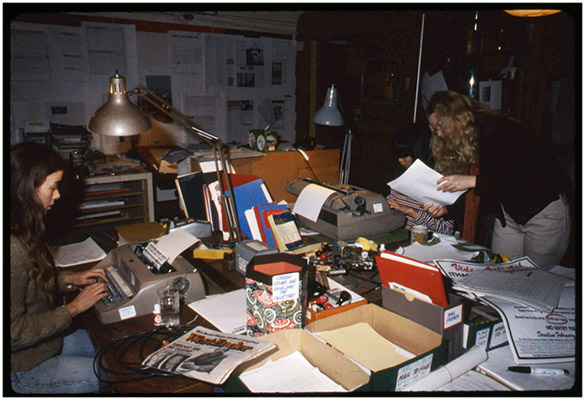Video-Inn
In January 1973 a group of about a dozen local artists interested in video came together at the Matrix Video Conference. Hosted by the Vancouver Art Gallery and co-organized by Michael Goldberg and Trish Hardman, Matrix invited over 160 international video makers to the city. The conference admission price was the deposit of a single videotape and a filled-in Satellite Video Exchange Directory card. Paul Wong and Annastacia McDonald were among the young artists who were recruited to help at the event by dubbing participant copies. The resulting tapes formed the base of a new video collection and the Satellite Video Exchange Society was officially founded as a new video resource space with a library. The space they rented at 261 Powell Street became known as the Video Inn.
Annastacia McDonald, Paul Wong, Mary Ready and Jeanette Reinhardt were involved in the early days at Video Inn. Both Ann and Paul were founding board members, and all of the artists worked shifts at the Video Inn, helping with operations and contributing to the organization’s artistic and social work. The centre became an important West coast node in an international network, and also raised awareness of -- and access to -- video and media equipment. Governed collectively, Video Inn fostered egalitarian practices, and became an active social hub as well as an important force in media education.
As the Mainstreeters came and went, so too did the group’s roles and responsibilities. Jeanette Reinhardt founded Video Out in 1980, while Paul Wong became a central figure, contributing regularly to Video Guide and petitioning the CRTC for artists’ access to broadcast television. Video Inn also played a key role in the development of formative Mainstreeter works like the '4', and was equally important as a node the Mainstreeters’ social environment. During her years there, Annastacia McDonald met Kazumi Tanaka, a photographer and recent immigrant to Vancouver. Tanaka took up residence at 26th and Main, and was welcomed into the city by the Mainstreeters (Tanaka documented much of their lives together).
From the original objectives of the Satellite Video Exchange Society:
“It is our view that video must inevitably become an integral tool in the education process, for its immediate impact, visual orientation and enhancement of the non-verbal perspective. We would like to see the concept of education expanded from a disciplinary process in a restricted space to a broader base involving development through personal initiative in the context of a total living process. This clause is unalterable.”

